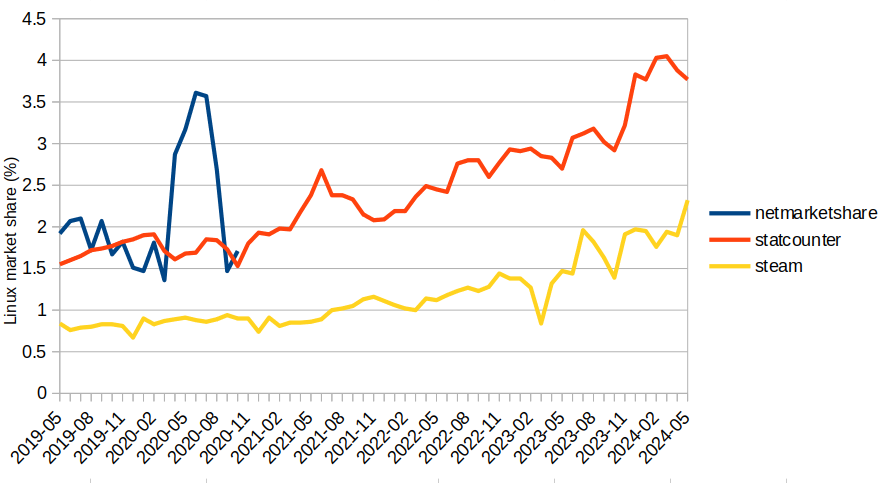Nvidia Turing and later are getting a new driver (nvk + Zink) by default in Mesa 25.1, which is currently landing in various distros' repos.
pancake
Good point, thanks. The way I modeled the adjustment was by assuming that most usage is captured by Statcounter but there's movement back and forth to a reservoir that flies under its radar, in bursts, with zero net movement in the long run. So I used a geometric mean of the source data scaled by the square root of their averaged ratio.
Wait, is doing parallel operations using unmodified RAM a thing? That's super cool, will look into it!
Today's a dear friend's birthday, and I've got a really cool present for them!
Getting an initial impression of some new field I want to learn about. I ask the model for a short summary and links to more in-depth information. This would be more difficult to do on my own when I don't even know where to start.
Microprocessor manufacturing. Just think about it: we invent a device called the transistor. We're making them one by one and using them to make computers. And then, we just find the way to cram more and more of those devices in tiny, dirt cheap slabs of silicon that are literal computers by themselves. In 2021, a typical processor contained 60 billion transistors.
Rust has gone too far.
Okay, first of all I must admit it's been years since I last wrote anything web-related. My JavaScript is a bit rusty, but I definitely see the problem that funcSug seeks to solve. I'm really impressed too with all the resources the authors have put together, especially the playground! I'm sorry I can't say anything more useful given my little web programming experience. I'm bookmarking this though :)
Looks good, I'll have a deeper look at it later today.
Thanks, great insight!
Interesting. Liquid ventilators do use pumps; I guess because, as you say, we can't push the liquid fast enough with our own force. But I think some research setups only fill the lungs and then use a regular oxygen ventilator, so maybe it's not that infeasible to survive in a perfluorodecalin-filled tank for at least a few minutes, before becoming exhausted?



Hungarian news sites seem to be posting this same piece of news, which supports its authenticity. The only bias here would be whether the media choose to report this or not (reporting bias). So far most European and American outlets are silent.